BOS LE300 Smart Battery System, the new frontier in energy storage.
The debate is always raging about which is the best solution between lithium batteries and traditional lead batteries. On the one hand, the almost total discharge capacity (and therefore usability) of lithium batteries, and on the other, the peak performance and power offered by traditional AGMs, which, however, cannot drop below 80% of their voltage otherwise they are irreparably compromised.
It’s quite a dilemma to face, especially when it comes to marine use, where our beloved service batteries are subjected to intensive use and must (given their cost) last a long time and not leave us stranded.
Fortunately, the German company BOS AG has come up with an ingenious solution that maximizes the strengths of the two alternatives by making them work together – an innovation that we were so intrigued by that we wanted to try it out…
About the BOS LE300 Smart Battery System
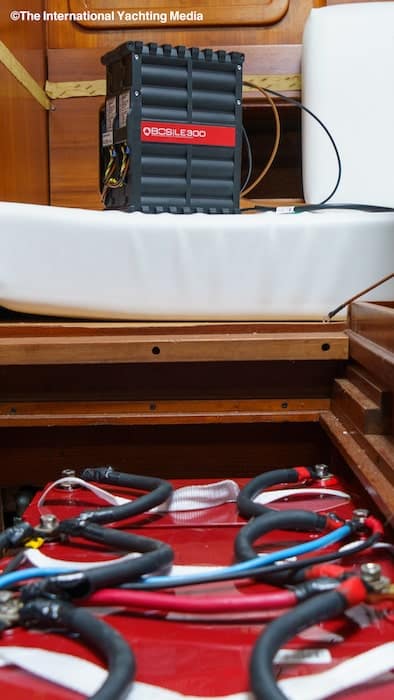 The BOS LE300 Smart Battery System is an advanced energy storage system consisting of individual 12v lithium smart battery modules, each offering 28 Ah of capacity and 12.5 A of current.
The BOS LE300 Smart Battery System is an advanced energy storage system consisting of individual 12v lithium smart battery modules, each offering 28 Ah of capacity and 12.5 A of current.
The batteries are very compact in size and are designed for parallel assembly to achieve the desired capacity, which will be determined according to the needs of the individual boat.
These lithium batteries can be used either to increase the total capacity of existing lead-acid battery packs, or to study and optimize the operation of a new battery pack, when replacing it or installing it for the first time.
But the real innovation of the BOS LE300s is that their intelligence is designed to prioritize discharging and recharging of their modules, which, by reading the voltage of the lead-acid batteries to which they are connected, effectively eliminate any deteriorating factors.
In fact, it is common knowledge that traditional batteries operate in a range between 12.8 and 10.8 V, although it is advisable not to take them to a voltage lower than 12.3 V in order not to compromise their life.
Well, the primary function of the BOS LE300 is to replace the discharge of lead-acid batteries, keeping them constantly at the highest possible voltage, using the ability of lithium batteries to deliver amps without decreasing their voltage.
In short, the BOS LE300 can discharge completely while the lead-acid batteries remain charged and healthy! Added to this is the fact that this technology is designed to be truly plug-and-play, i.e. the installation of the BOS LE300s does not require any additional charger: you only need to put them in parallel with your existing batteries, which clearly justifies the title of this article.
BOS LE300 Smart Battery System: installation
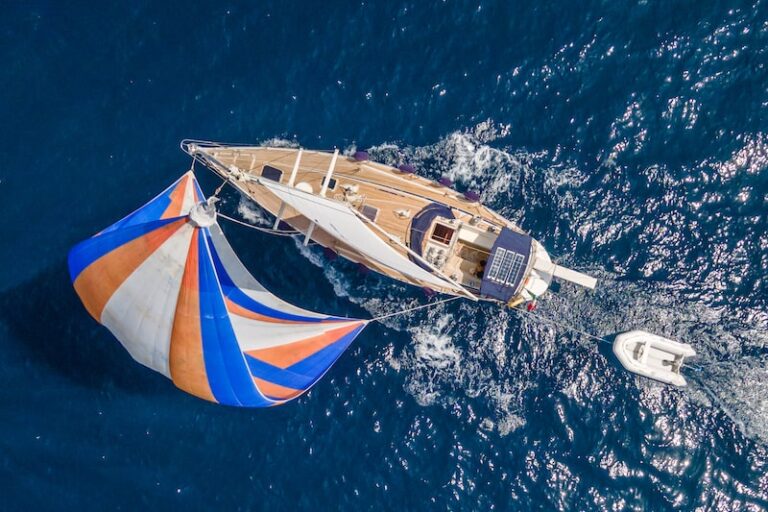
All this, despite the 150 watts of solar panels we have and due to the large number of nights spent at anchor, rapidly deteriorates the traditional batteries we have. In fact, after only four years of use, we find that one of the batteries is compromised and two others are below the minimum voltage level, which means they are also on their way to expiring. We have to change them all.
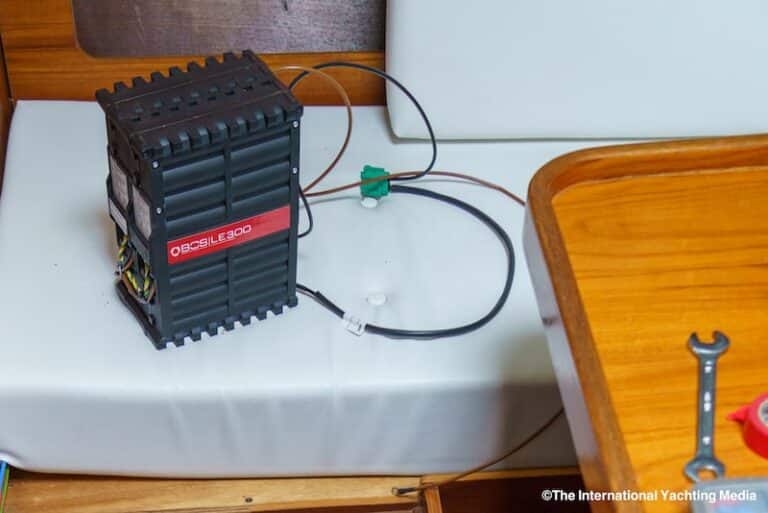
In place of the fifth battery, we will instead install 4 BOS LE300 modules which, as well as optimizing the operation of our energy reserve, will provide us with a total of 102.4 Ah and will be able to deliver 50 A of current, the AGMs will therefore only be “stressed” once this reserve has been used up.
Installation is very easy, the modules are lightweight and space-saving, nothing compared to the huge effort just put into disembarking and embarking traditional batteries.
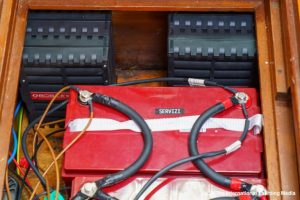
In our case we have chosen to pair the modules two by two so that they can be easily distributed in the space available but, if you wish, it is also possible to compose them in a single one-piece block.
The actual installation time, excluding the AGMs of course, is about ten minutes with a very low degree of difficulty. In short, anybody can do it: simply insert the modules into the available space, loosen the nuts on the AGM battery poles, insert the BOS LE300 cable lugs into the corresponding bolts and tighten again. A piece of cake.
After-installation Test
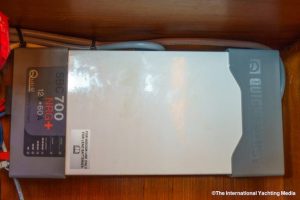
The following morning we disconnect the quayside cable and wait a couple of hours, after which we climb aboard to measure the voltages.
The situation is clear: the engine battery, which is completely isolated, shows a voltage of 12.8 Volts; the utilities-dedicated batteries, connected to the four modules of the BOS LE300 Smart Battery System, measure 13.5V! In practice, it is as if they were charging, in maintenance mode.
We wait a few 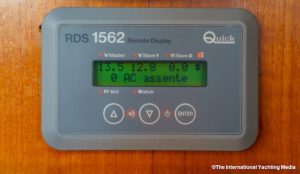
We therefore check the state of the BOS LE300s which, being equipped with autonomous LEDs, show a green light indicating their full charge.
Now we make some empirical tests. First of all, we put the engine battery in parallel by means of the common battery charger and, instantaneously, the BOS LE300s bring it too from 12.8 to 13.4 V.
We disconnect the engine charger again and, wanting to find the limits, we switch on everything: fridge, bilge pumps, all the on-board lighting (incandescent), the navigation lights and the deck light.
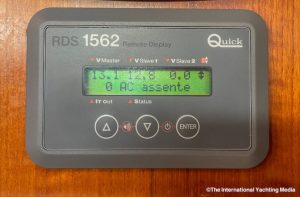
We repeat the experiment over and over again, but the result is unchanged. This is irrefutable proof that only the lithium batteries are working, supplying power to the boat without affecting the capacity of the utilities-dedicated AGMs.
Now all we have to do is connect the solar panels to the system and we will have achieved a small masterpiece of energy self-sustainability.
The BOS LE300s will recharge themselves using the surplus voltage provided by the solar panels and, in turn, will keep the service AGMs charged, so they will never have an energy “deficit”.
This system also protects the boat from the risk of galvanic currents when the battery charger and shore power are connected..
Now what?
So now we leave our 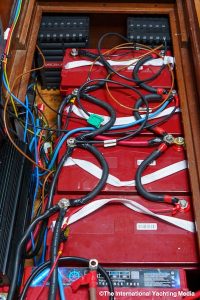
We want to see how the system performs over time, both during the weeks we spend at anchor and during our cruises.
The BOS LE300s will therefore be put to the test by the use of the hydraulic system during sailing, stressed by the nights spent at anchor with the utilities on and put to the test by the numerous daily anchorages and unanchorages, where the 1,400 watts of our winch must manage our 80 meters of chain and the 27 KG Ultra, a heavy anchor line, but indispensable for sleeping peacefully when the seabed is over 15/20 meters deep.
We will be putting the BOS LE300 Smart Battery System to a really important test and, at the end of the season, as always, we will bring you the results.
And if in the meantime you feel like coming to see first hand what we have just told you about, as always the Daydreamer is not only available but proud to welcome our readers.
About BOS Balance of Storage System AG
BOS Balance of Storage Systems AG is a German high-tech company based in Neu-Ulm. The company was founded in July 2014, the CEO and co-founder of the company is Benjamin Seckinger. BOS aims at becoming the leading company in decentralized energy supply with a focus on Li-Pb (lithium-lead) hybrid charging technology for solar systems that supports intelligent load management. Their key markets are in rural and semi-urban areas in Africa, South-East Asia and Latin America with insufficient access to modern energy services, as well as market segments in industrialized countries that require decentralized power supply.
BOS LE300 Smart Battery System – Technical Specs
System voltage | 12 VDC |
Norminal voltage | 12.8 VDC |
Voltage range | 11 -15 VDC |
Battery packs used in LE300 | IFpR/26/65 [8p/4s] E/-20NA/95 LiFePO4 rechargeable battery |
Nominal lithium capacity | 28 Ah / 358 Wh |
Usable lithium capacity | 90% (25.2 Ah / 322 Wh) |
Numbers of cycles at room temperature | >3000 complete cycles |
Continuous charging current | Max. 12.5 A between 5 and 40°C, at higher and lower temperatures current is limited. |
Battery efficiency | > 90% |
Housing dimensions | 175 x 229 x 67 cm |
Weight | 3.4 kg |
Recommended wire size | 1.5 – 4 mm² |
Ambient temp. (operation & warehousing) | -20 – 50 °C ambient temperature with |
| maximum battery life at 15 – 25 °C. | |
| Warehousing temperature 10 – 30 °C. | |
Low and high temperature protection, | Temp. sensor prevents lithium battery charge under -5°C or above 55°C cell temp. |
| heating, charging & discharging | Charging starts once cell temp. is higher than -5°C. |
| Device has an integrated heating that is active between -20°C and 10°C cell temp. | |
| Discharge possible between -20°C and 60°C cell temp. | |
| At cell temp. below -20°C and over 60°C system is running in pure lead acid mode for higher battery lifetime. | |
Lithium cell balancing | Battery management inclusive balancer |
Protection features | Overcurrent, overvoltage, short circuit, deep discharge, wrong polarity protection. |
Operation mode/compatible external batteries | Works in combination with any 12 V lead acid battery & lead acid charge controller. |
Connection possibilities | Packs can be connected in parallel with each other (see exemplary parallel combination in the table below). |
Max. parallel LE300s | In standard version, a maximum of 24 |
| LE300 can be connected only in parallel, higher quantities possible after consulting BOS partner. |




















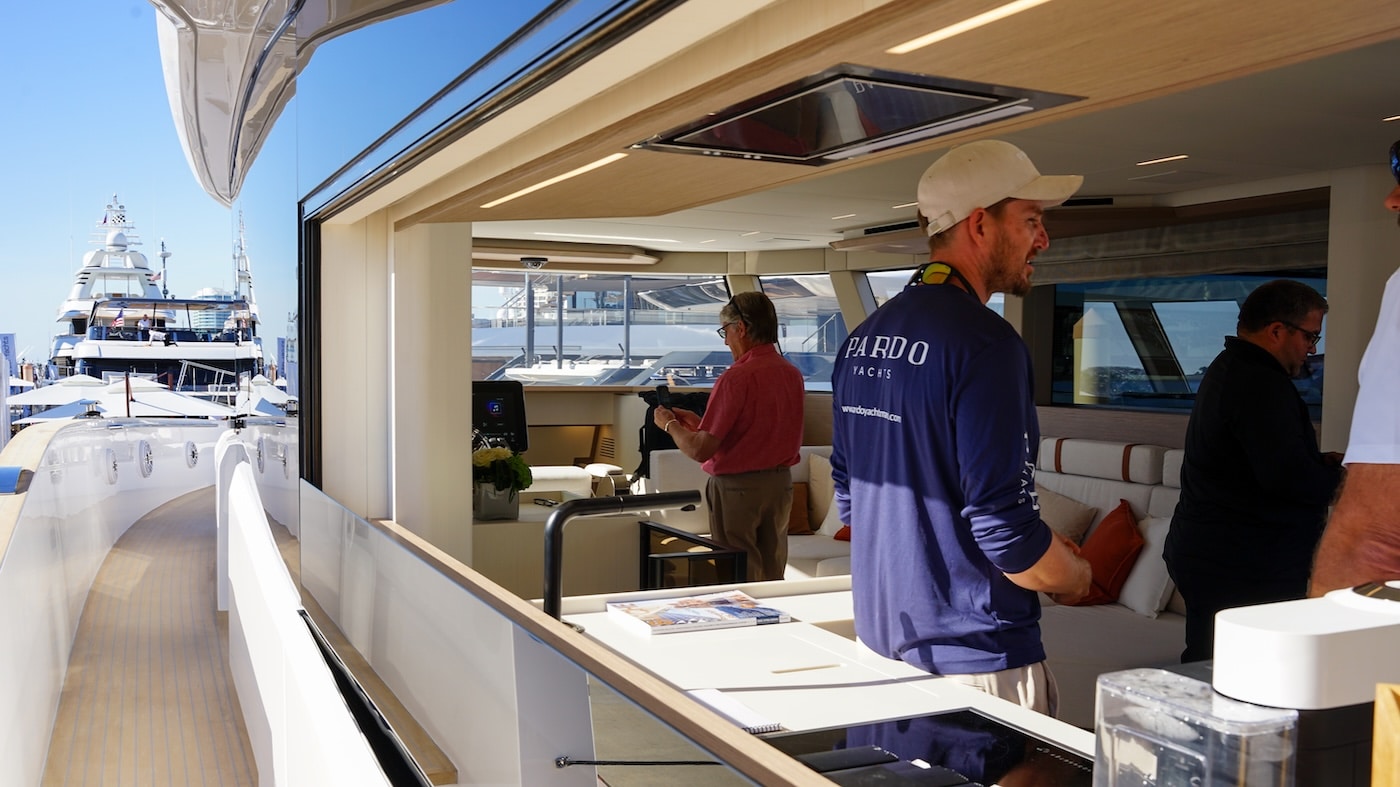
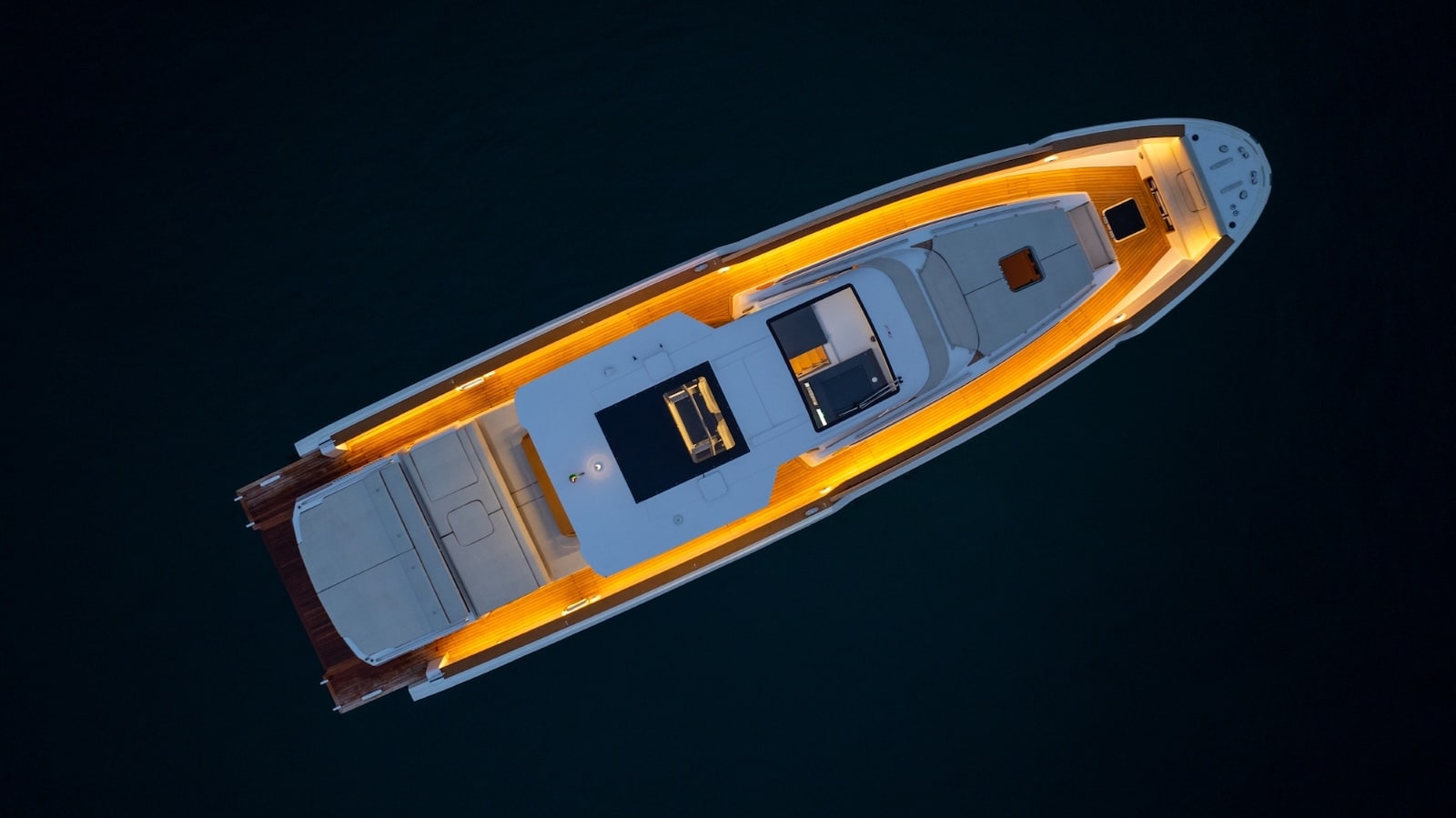
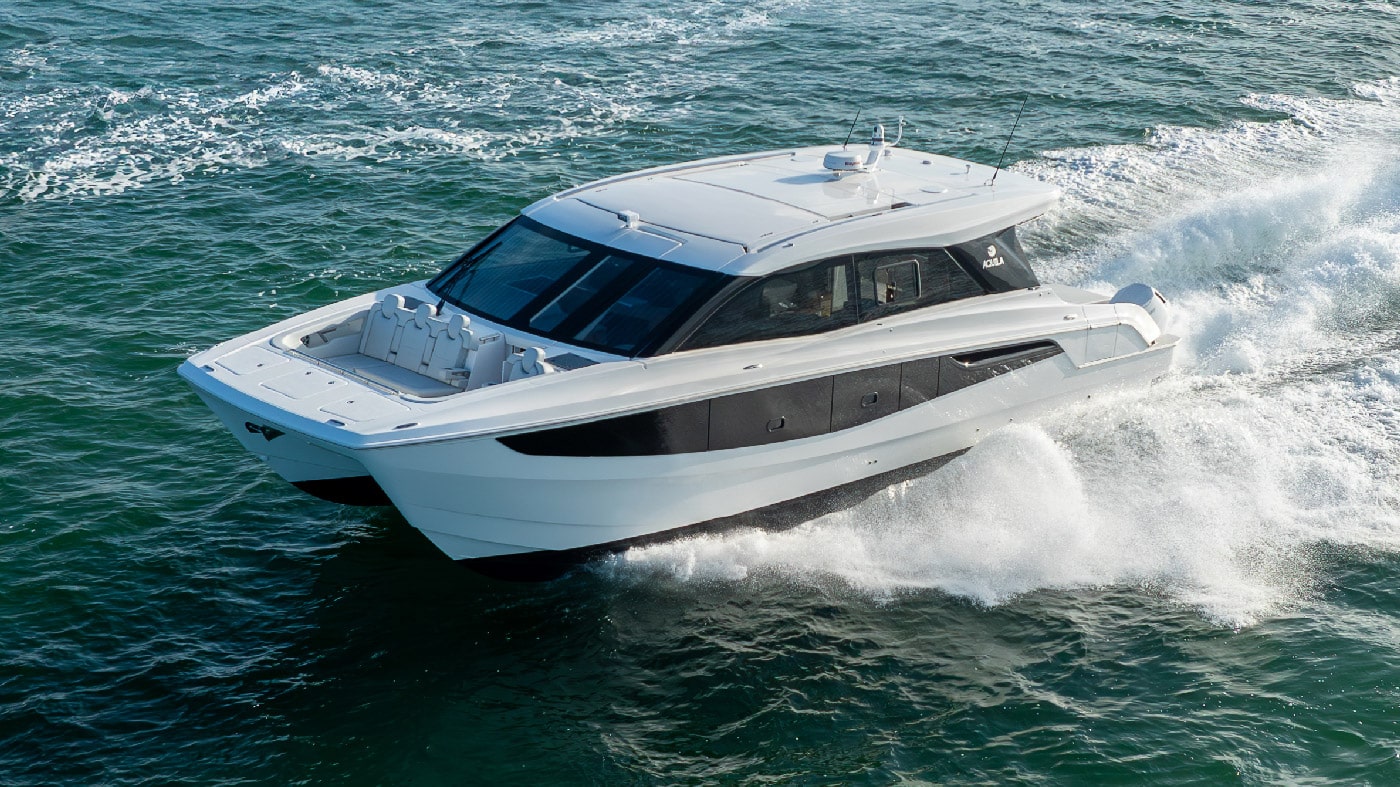
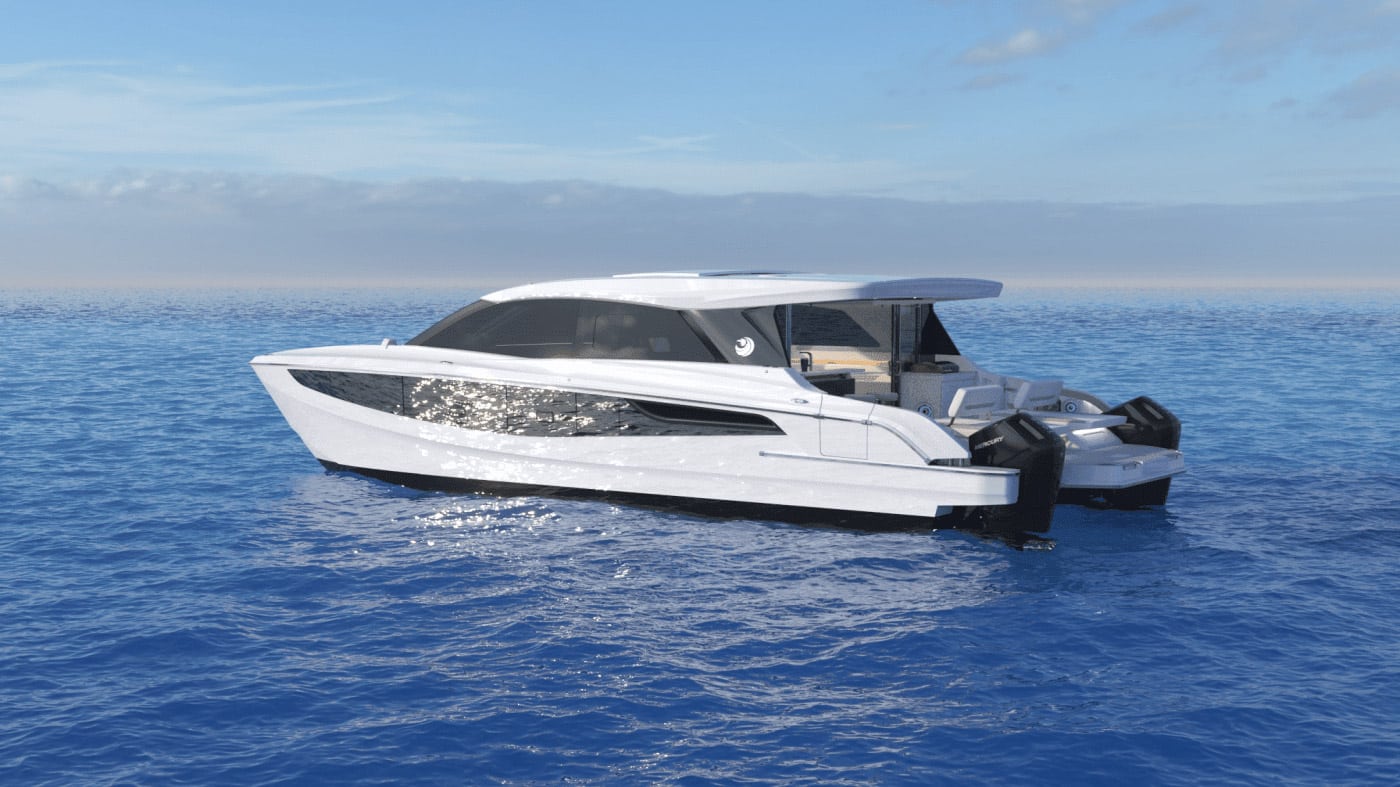


5 Responses
sistema molto interessante. mi chiedevo il regolatore di carica dei pannelli solari deve essere impostato per batterie al piombo e collegato alle batterie al piombo?
Nel nostro caso i pannelli sono stati collegati alle batterie al litio, in modo da sfruttare il maggior voltaggio che consentono, quindi il regolatore è impostato per questo tipo di batterie (litio) che accettano appunto un voltaggio massimo più alto di quelle al piombo.
I would love to purchase your system for my RV is there any way I can buy your system in the United States. If not I have a very good friend that lives in Germany maybe it would be possible for her to purchase some for me. I have two 100 amp AGM batteries in my RV now and would like to add two of your units.
Hi Paul, Daniela from BOS here. Sure, that is possible. You can contact me via mail: daniela.bilstein@bos-ag.com
Kind regards!
Now that a year has passed what are the results, please?